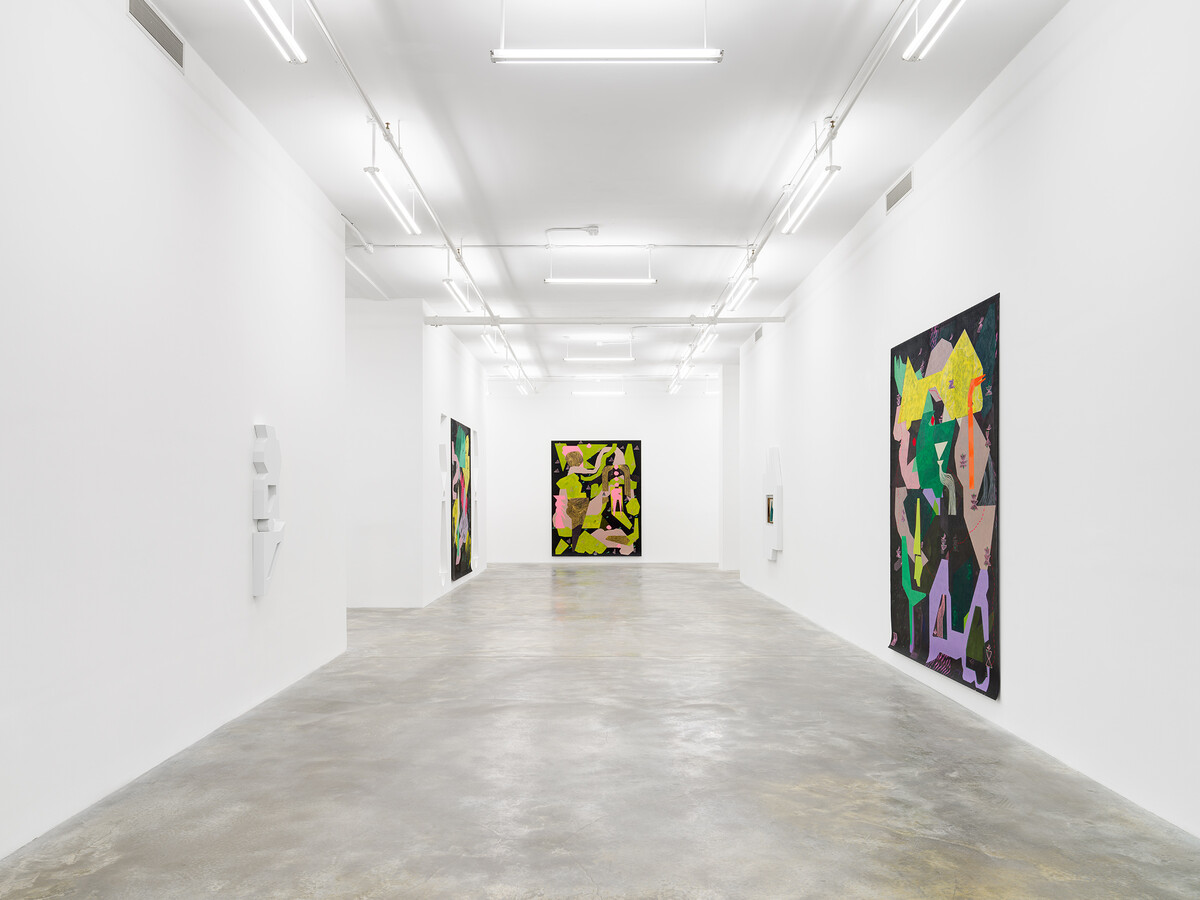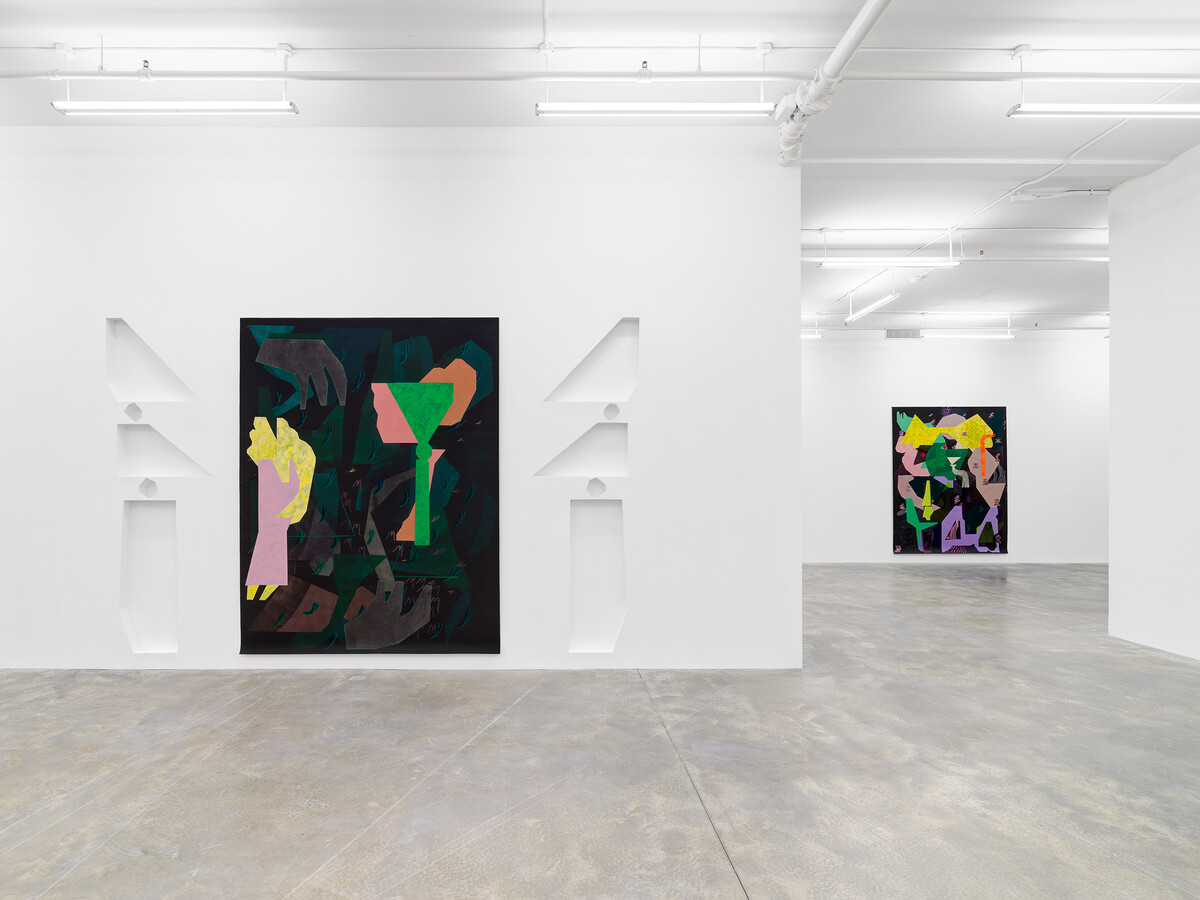
Installation view, This space for correspondence; Courtesy of the artist and Casey Kaplan
Every touching experience of architecture is multi-sensory; qualities of space, matter and scale are measured equally by the eye, ear, nose, skin, tongue, skeleton and muscle. Architecture strengthens the existential experience, one’s sense of being in the world, and this is essentially a strengthened experience of self. – Juhani Pallasmaa, The Eyes of the Skin: Architecture and the Senses, 1996
Casey Kaplan is pleased to announce Caroline Kent: This space for correspondence, an exhibition of monumental unstretched paintings with new wall-based sculptures in relief, stretched acrylic paintings, and site-specific wall cut- outs.
“This space for correspondence” is a directive often written on the back of a postcard denoting a designated area for a brief message. Postcards have become an insignia for nostalgia and the “old ways” of communication. This once- beloved labor of conveying sentimental inclinations, sublime experiences of new landscapes and architectures, and a particular type of longing is now encapsulated in a few lines penned on a 2x2-inch square, opposite images of idealized locations.
In a new body of acrylic paintings on canvas, Kent instigates sites for interpretation through emboldened black surfaces of overlapping forms, gestured through radiant and hushed tones. Her markings, in their open play, signify a type of schematic akin to asemic writing (a wordless open semantic form of writing), divulging an impression of meaning that is declarative yet inaudible. Geometric forms are recalled and recomposed from Kent’s ongoing archive of paintings on paper in which arrangements of shapes are constructed in a daily, diaristic exercise. In this way, Kent’s paintings come into being through a process that parallels how one’s personhood is actualized through constant experimentation and discernment.
An uncanny hierarchy is suggested through shadows and familiar impressions marked through sculptural relief and recess. Shapes from nearby paintings are configured into totemic formations and cut into the gallery’s walls in counter-relief, an inverse and presence of familiar and absent entities. The wall cut-outs frame two large-scale unstretched paintings, intimating columns flanking a threshold for mindful crossing.
White, stark relief structures pierce this aesthetic field with a lack of painterly gesture. Like extensions of the gallery’s walls, these forms emerge and give dimension to a memory. Several contain paintings on Belgian linen, their intimate scale compelling distilled compositions like the aforementioned square for correspondence. Imprints of memories, definitive and unreliable, are embedded in our psyches. They are idealized real fiction, not unlike a postcard’s broken dialectic of image and text, enigmatic in their want for connection. We are left in a state of eternal interpretation, turning over and over to remember what is on the other side.

Installation view, This space for correspondence; Courtesy of the artist and Casey Kaplan
